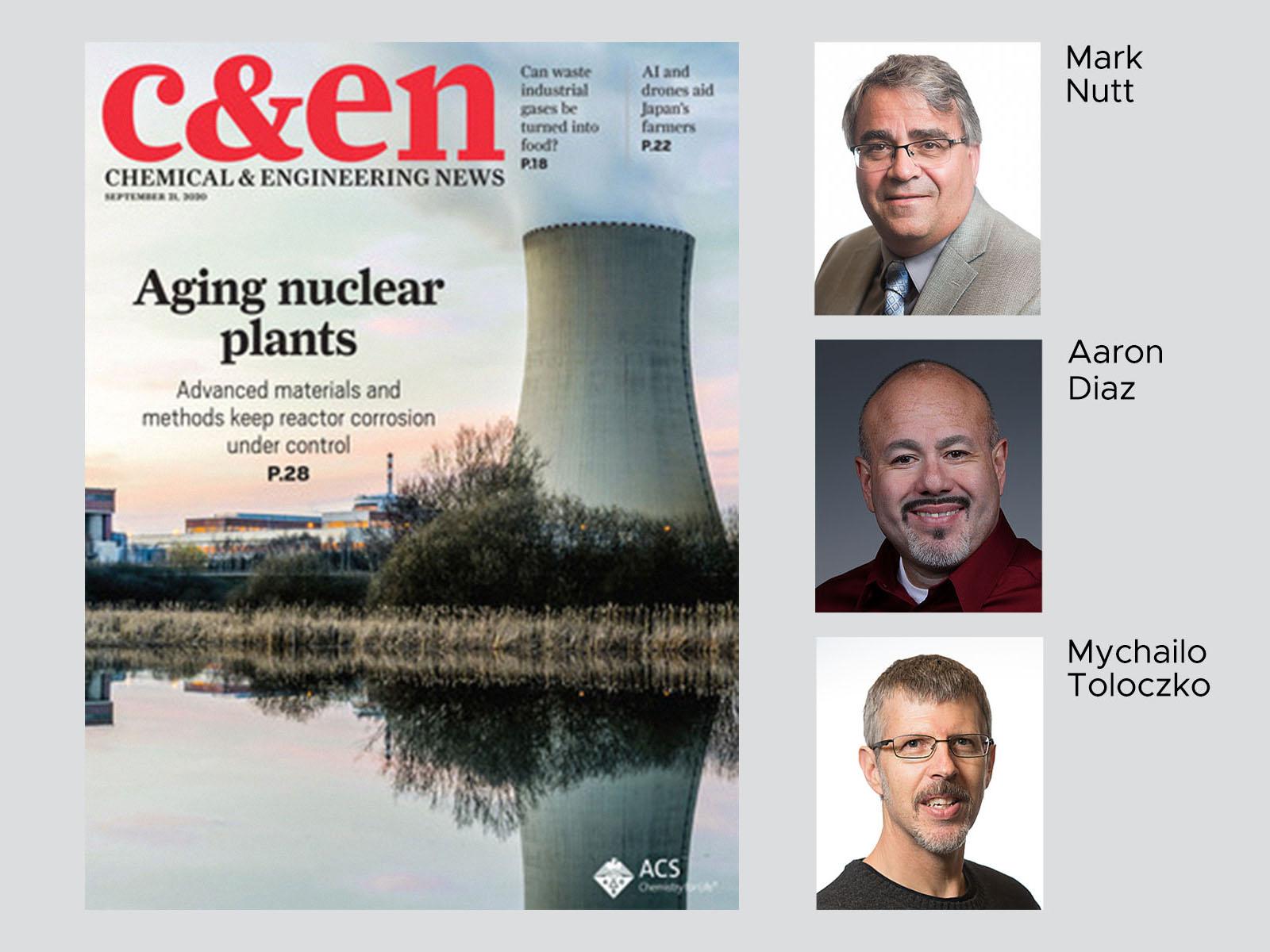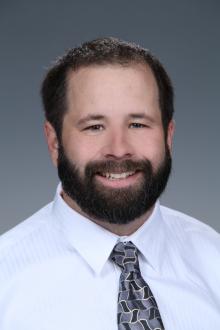C&E News Features PNNL Materials Science Capabilities
Cover article focuses on integrity of nuclear reactor components

PNNL’s nuclear energy research focuses on assuring reactors continue to operate safely and efficiently for many decades to come.
(C&E News cover courtesy of Chemical and Engineering News; composite image by Shannon Colson | Pacific Northwest National Laboratory)
Roughly 20% of U.S. electricity is produced by nuclear power reactors that have been running reliably for 30 to 50 years. Pacific Northwest National Laboratory’s (PNNL’s) nuclear energy research has been zeroing in on how to assure these reactors continue to operate safely and efficiently for many decades to come.
These efforts were highlighted in a recent Chemical & Engineering News (C&EN) cover article—“Combating corrosion in the world’s nuclear reactors”—featuring PNNL research leaders Mark Nutt, Aaron Diaz, and Mychailo Toloczko.
PNNL’s mission to support sustainable nuclear energy has long focused on research and development for aging management, corrosion resistance, and materials science.
To safely extend the operational lifetime of nuclear reactors, scientists and engineers strive to improve methods for monitoring and predicting the integrity and strength of the reactors and the components inside that are continuously pummeled with heat, pressure, and radiation. Because of that, inspectors regularly use high-resolution ultrasound, electromagnetic imaging, and other methods to search for tiny flaws, cracks, and signs of fatigue in 25 cm thick reactor walls, safety systems, and other reactor components, says Aaron Diaz, a PNNL physicist.
fleet of nuclear power reactors and enable the deployment of advanced nuclear systems.
PNNL researchers study stress corrosion cracking (SCC), which is a type of chemically induced damage that can develop at weld joints between different types of metals. If these spots corrode, they have a tendency to develop microscopic cracks, which can decrease the lifetime of reactors. These areas are “the main life-limiting degradation mechanism [for reactors],” explained Toloczko, a PNNL materials scientist. As Nutt said in the article’s closing quote, “the R&D doesn’t stop when the plant comes on line.”
Nutt leads PNNL’s nuclear market sector, with expertise in aging management and the disposition of spent nuclear fuel. In the article, he highlighted PNNL’s advances in materials and corrosion science for reactor longevity. Also contributing to the C&EN article were:

characterization expert.
(Photo by Pacific Northwest
National Laboratory)
- Diaz, a physicist, who provided insight on non-destructive evaluation techniques for inspecting reactor infrastructure and components at risk for developing defects.
- Toloczko, a materials scientist, who shared expertise on SCC—microscopic damage that can result in structural weaknesses of key parts in reactors.
- Matt Olszta, a materials characterization expert, who contributed background information on electron microscopy techniques central to diagnosing materials degradation or failure.
“Advancing the science and technology around reactor aging management is truly interdisciplinary and takes a talented team of experts. We’re lucky to have a diverse team at PNNL,” said Nutt.
Ultimately, the goal is to keep reactors safely running longer—from 20 to 50, or even possibly 100, years beyond the original operational lifetime. PNNL’s research and expertise—from materials science to cutting-edge electron microscopy—plays a pivotal role in supporting the U.S. Department of Energy, U.S. Nuclear Regulatory Commission, and the nuclear power industry.
C&EN is a weekly chemistry news magazine published by the American Chemical Society since 1923.
Published: November 25, 2020